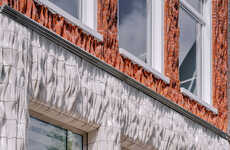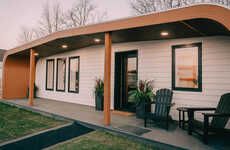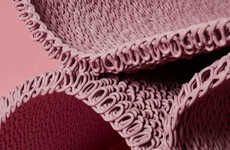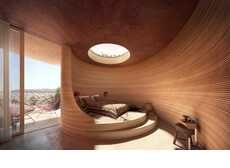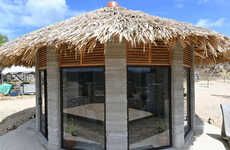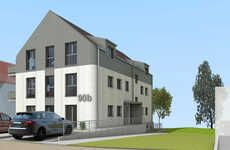
British Architect Priestman Infuses Architecture with Technology
UK-based British architect Adrian Priestman has integrated architecture with technology in his latest design, using a 3D printer to print the components of a building and incorporating it into his architectural designs.
In referring to the refurbished 6 Bevis Marks office building in central London where he created a sheath for the roof canopy, Priestman says, "[t]his is truly the first architectural application of the 3D nylon sintered technology. It's architectural in so far as it's been through an approval process and tried and tested, and actually installed in a building."
The sheaths are 3D-printed and have been custom designed to wrap around a collection of columns and arms that support the canopy's roof.
On the sustainability of the components, Priestman says, "We got it tested in 1000-mile-per-hour winds in wind for 2000 hours, extreme weather tested. Once I had done that, the product was approved by the big contractors for the building."
In referring to the refurbished 6 Bevis Marks office building in central London where he created a sheath for the roof canopy, Priestman says, "[t]his is truly the first architectural application of the 3D nylon sintered technology. It's architectural in so far as it's been through an approval process and tried and tested, and actually installed in a building."
The sheaths are 3D-printed and have been custom designed to wrap around a collection of columns and arms that support the canopy's roof.
On the sustainability of the components, Priestman says, "We got it tested in 1000-mile-per-hour winds in wind for 2000 hours, extreme weather tested. Once I had done that, the product was approved by the big contractors for the building."
Trend Themes
1. 3D Printing in Architecture - Using 3D printing technology to create architectural components offers a disruptive innovation opportunity to streamline the construction process and enable custom designs.
2. Integration of Technology in Architecture - The integration of technology, such as 3D printing, in architectural designs opens doors for innovative and sustainable building practices.
3. Sustainable Architectural Components - Developing 3D-printed architectural components that are weather-tested and durable presents a disruptive innovation opportunity for sustainable building solutions.
Industry Implications
1. Architecture - The architecture industry can leverage 3D printing technology to revolutionize the construction process and create unique, customizable designs.
2. Construction - Integrating 3D printing technology into the construction industry can improve efficiency, reduce waste, and offer more sustainable building solutions.
3. Materials Manufacturing - The materials manufacturing industry can explore opportunities to develop advanced, weather-tested materials for 3D printing architectural components, revolutionizing the construction sector.
6
Score
Popularity
Activity
Freshness


